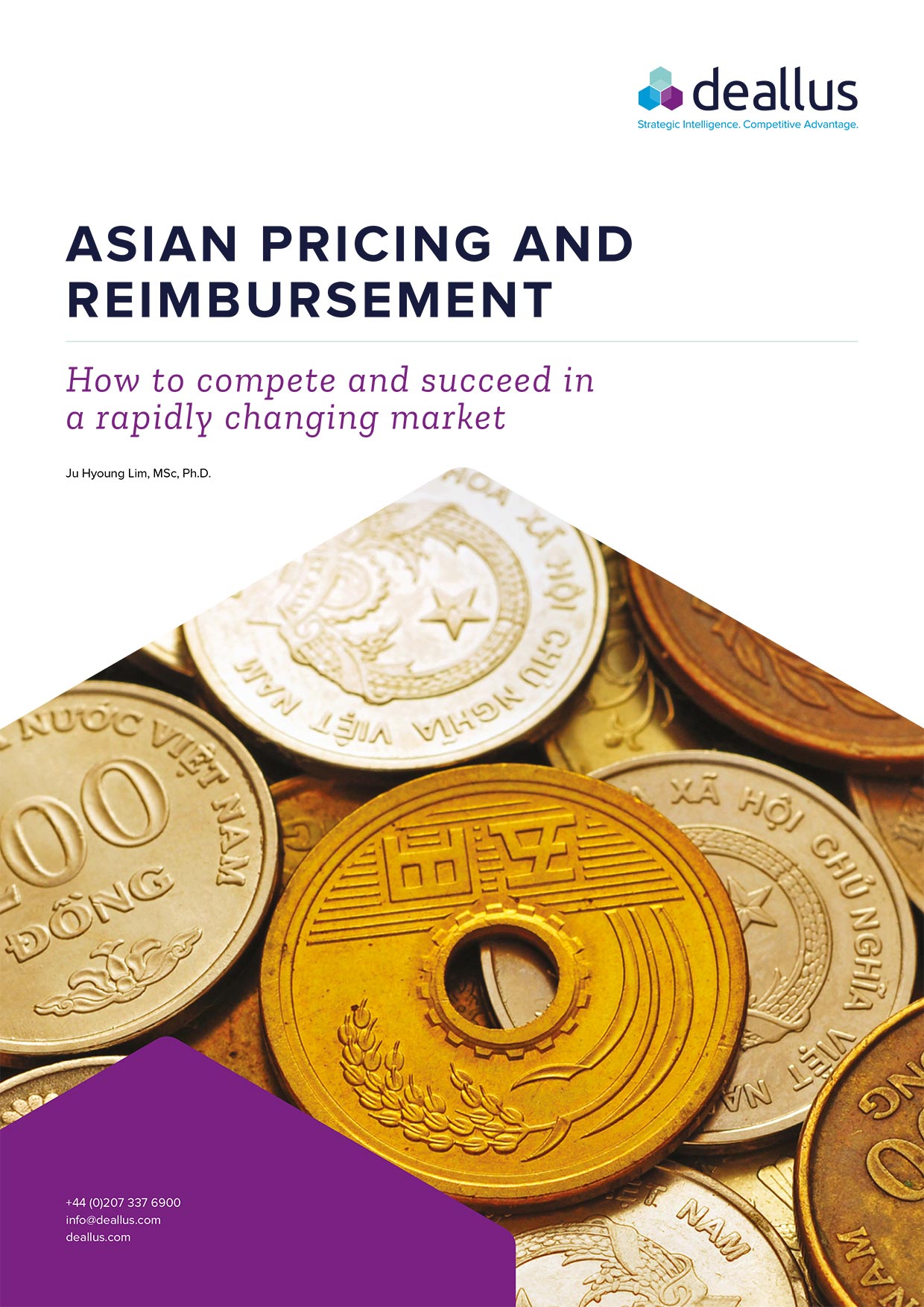Asian Pricing and Reimbursement
Ju Hyoung Lim, PhD
How to compete and succeed in a rapidly changing market
A land of pharma opportunity and financial challenges
Growing major trends are emerging across Asian healthcare markets. Rising incomes, increased government healthcare expenditure, higher life expectancies and a surge of chronic illnesses are boosting the demand for pharmaceutical products and services in the region. This sea of change is also being driven by multiple factors including government healthcare reforms, increasing Universal Health Coverage (UHC), the rise of private financing and heavy promotion of the generic market.
This offers a significant opportunity both for established pharmaceutical companies in the region who wish to continue to thrive and for those considering entering the Asian market. However, it also presents a unique set of regional challenges and commercial success will be dependent on understanding the complexities of the Asian pricing and reimbursement environment.
Opportunities within a changing Asian market
The Asian healthcare landscape is a dynamic one. The region consists of a wide diversity of healthcare markets in very different stages of development, particularly with regard to their healthcare infrastructure.
The healthcare environment within Asia is changing dramatically and spending in the region has shown an explosive rise in recent decades. Between 2009-2012 Asian markets showed the highest growth of per-capita healthcare spending in the world, at 38.8% of CAGR compared with the global average of 26.3%.1 The sharp increase of healthcare spending in this region can be explained by several factors, including growing economies, expansion of the middle class, the rise of chronic illness and increased life expectancy.
To meet this rapid growth, Asian healthcare systems will need to expand and adapt. As more countries implement healthcare reforms, leading to greater patient population coverage, countries across Asia will need to address pricing and reimbursement challenges to meet healthcare demands.
About the author

Ju Hyoung Lim, PhD
Ju has played a pivotal role within Deallus to expand our presence in Asian markets, driving business growth throughout Singapore, Japan, and China. Ju works closely with clients in order to manage and support both regional and global projects. He has extensive experience in competitive intelligence, portfolio planning, indication scoping, forecasting, product planning, and workshop design.
You may also be interested in…
World Brain Day 2024
Established by the World Federation of Neurology in 2014, World Brain Day seeks to raise public awareness on various neurological health topics each year. This year’s theme, “Brain Health and Prevention”, brings awareness to preventive measures that can alleviate the burden of many neurological conditions for patients across the world.
World Kidney Cancer Day: The future of RCC treatment
World Kidney Cancer Day brings much needed attention to a disease affecting hundreds of thousands of people worldwide.
Revolutionizing Blood Cancer Treatment: A Dive into Cutting-Edge Therapies
World Blood Cancer Day [28 May 2024] serves as a stark reminder of the significant challenges faced by the millions battling these life-threatening diseases. Here at Deallus, we have been privileged enough to partner with many leading companies in this space to support the development of lifechanging therapies across haemato-oncology.
World Day for Cultural Diversity 2024
Feel the driving force of Cultural Diversity as voiced by my global Deallus colleagues. Happy World Day of Cultural Diversity!





